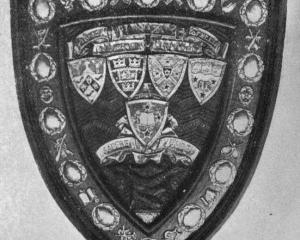Dr Ada Paterson, who has been medical inspector of schools in Otago and Southland during the past four years, and who is leaving to-day to take up a similar position in Wellington, in the course of conversation with a Daily Times reporter yesterday gave an interesting resume of the progress and results that have come under her notice.
She said: "About three months ago it was decided to form special classes at some of the schools, in order to prove the great utility of this tuition. For this purpose children who showed sub-normal muscular development, bad posture, or any slight deformity were given careful attention, the classes being called corrective or remedial classes. We knew perfectly well that there were numerous other children who required the physical exercises, but it was impossible to take them all in hand. The experiment has proved the value of the work undertaken in the 20 schools in and near the city. I have found a wonderful improvement in the children treated. I held examinations of them recently, and in almost all cases discovered an increase of chest measurement, general development, and weight. The work has, indeed, been well worth while. The school teachers have given useful and enthusiastic help to the scheme. I understand that the scope of these classes is to be enlarged, and I believe that it will be a fine thing for the younger generation.''
• The scarcity of tonnage and the boom in coal freights have been responsible for resurrecting a number of old sailing ships which under ordinary conditions would have had no chance whatever in the freight market (states the Shipping World).
Small wooden schooners, brigs, and barques, chiefly flying the Scandinavian flags, are a good deal in evidence at the East Coast ports of England.
They bring across consignments of pit-props and take back coal, and are able to make more money in their old age than ever they did in their early careers.
One Tyneside broker fixed such a vessel recently, and remembered that she used to trade with the river 42 years ago, when steamers were in their infancy.
Some of the best of these sailers, notably a few which are British owned, have been fitted with motors to good purpose, and there is room for development in this direction.
• We have received the following communication from the Prime Minister, as chairman of the Recruiting Board:- "A rumour appears to have recently gained currency in various portions of the dominion that no more men will be required for the Expeditionary Force after the Sixteenth Reinforcements leave New Zealand. There is absolutely no truth in this report, nor has any information come to the knowledge of the Recruiting Board to justify any person giving expression to such an opinion. The circulation of a statement of this kind is apt to be most prejudicial to recruiting, and therefore I wish, as chairman of the board, to give it the fullest and widest refutation. So far from the time having arrived when we can slacken our efforts, we are now at a stage of the great crisis when it is more than ever essential that our forces at the front should be maintained at full strength. All indications point to our enemies having attained the maximum effort, and now is the time when our own armies and reserves of men must be constantly strengthened and renewed, in order that the signal Allied successes of the past fortnight may be driven home to final victory. Every man of New Zealand who is free to go is wanted.'' - ODT, 11.7.1916.
• COPIES OF PICTURE AVAILABLE FROM ODT FRONT OFFICE, LOWER STUART ST, OR WWW.OTAGOIMAGES.CO.NZ












